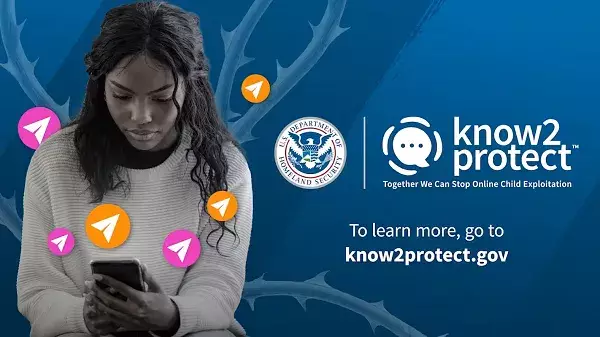In today’s digital landscape, where social connectivity thrives, the dark specter of child sexual exploitation and abuse (CSEA) looms larger than ever. Platforms like Snapchat, frequented by millions of young users, are now at the forefront of initiatives aimed at mitigating these dangers. Collaborating with the U.S. Department of Homeland Security’s “Know2Protect” program, Snapchat has made a compelling commitment to actively engage with its audience to combat the realities of online exploitation.
Launched in April of the previous year, Know2Protect seeks to inform and empower young internet users about the substantial risks they face in virtual interactions. The initiative’s critical goal is to equip teenagers with knowledge about safe online practices and report mechanisms for harmful encounters. As Snapchat steps into its role as a founding participant, it’s essential to examine the impact and effectiveness of these measures over time.
Results from New Research: A Mixed Bag
Snapchat’s ongoing research sheds light on the platform’s direct impact on young users regarding their understanding of online dangers. Findings from recent polls reveal alarming statistics: 24% of teenagers disclose having shared intimate imagery, remaining unchanged from the previous year. This figure is troubling, particularly considering that around 33% of respondents indicated they had experienced online grooming, albeit representing a small decline.
Further unsettling data points reveal that the challenges of catfishing continue to persist, with 35% of users reporting such experiences—only down slightly from last year. Notably, the concern about identity deception is rising, with 55% of individuals who shared intimate visuals stating they were misled about their conversants’ identities. This uptick raises eyebrows, showcasing a persistent vulnerability among young individuals navigating digital spaces.
Compounding this issue, a heart-wrenching 50% of participants who had shared intimate content reported losing control over that content once it was disseminated. More troubling, nearly two-thirds of teens admitted to losing control, signifying a hefty jump from earlier research. The implications of these statistics are profound, highlighting an urgent need for continued advocacy and prevention efforts.
Rising Awareness: A Beacon of Hope?
Despite these discouraging figures, there is a glimmer of promise with more youth becoming aware of initiatives like Know2Protect. With nearly 30% of respondents familiar with the campaign—a notable increase from the previous year—it’s evident that awareness is beginning to gain traction. Furthermore, 46% of the informed group could articulate campaign components, marking a significant rise in recognition compared to six months ago.
Most encouragingly, an overwhelming 89% of participants who engaged with the campaign sought additional information on online safety. Such engagement points to heightened awareness and proclivity for knowledge within their digital lives, crucial steps in fostering safe online interactions.
Snapchat’s Response: Technology and Awareness Collide
In response to the concerning data collected, Snapchat is ramping up its protective measures. The integration of PhotoDNA, a tool capable of identifying and eliminating online images of exploitative nature, is a step in the right direction. This technology, in collaboration with Google’s CSAI Match initiative, represents Snapchat’s commitment to ensuring user safety, making significant headway toward creating a secure environment for young audiences.
Additionally, innovations in the app include proactive warning systems that alert users about potentially harmful friend requests, enhancing their awareness while navigating the challenges of online friendships. Snapchat’s Family Center continues to evolve, providing essential tools for parents to monitor and engage in their children’s online interactions, an area of increasing importance in child safety.
The Path Ahead: A Critical Responsibility
As Snapchat and similar platforms grapple with the persistent threat of online exploitation, the road to improving digital safety is fraught with challenges. While current statistics indicate a stagnation in some areas of progress, the proactive measures being introduced are vital in combatting exploitation. As a platform beloved by younger audiences, Snapchat holds significant influence over shaping safe digital experiences.
Moreover, with the rise of technologies such as AI deepfakes, the landscape is bound to become more complex. Therefore, it is essential for Snapchat not only to bolster its existing measures but to remain vigilant and innovative in its fight against child exploitation and abuse. The stakes couldn’t be higher, and as social media continues to be an integral part of young people’s lives, embracing accountability and prioritizing safety must remain paramount.


Leave a Reply